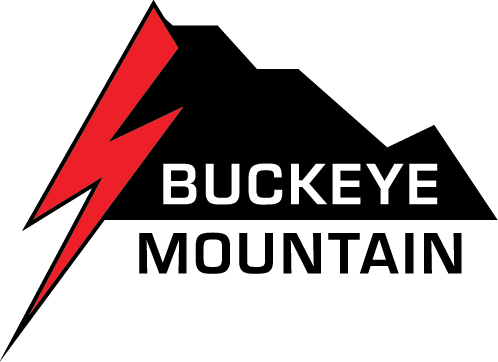Rapid Deploy Wi-Fi Buyer’s Guide
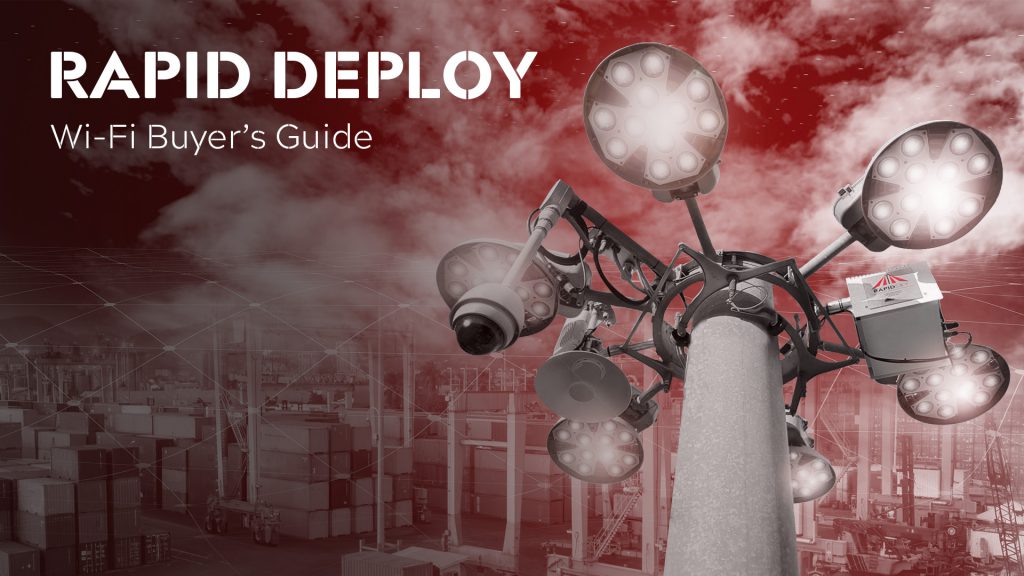
Rapid Deploy Wi-Fi Buyer’s Guide
The best wireless communications infrastructure should be designed specifically for the environment where it’s deployed.
But what happens when that environment drops a few thousand tons of corrugated steel in the path of your hotspot?
That’s exactly the challenge faced by rail yards and marine terminals. One day, your mobile devices will have clear lines of sight to the access points supporting local communications. The next day, shipping containers formed a 60-foot-tall wall, blocking that pathway and resulting in a poor or lost signal. And that’s only one problem plaguing transportation companies’ wireless connectivity.
“Managing connectivity in an outdoor environment is understood to be different than an office building or a home – but managing an ever changing outdoor environment creates even more of a challenge. You aren’t just monitoring uptime and downtime; it’s managing the infrastructure and coverage, high amounts of noise, and detours in network paths – all of which Rapid Deploy has engineered and designed. Redundancy is the backbone of Rapid Deploy. Whether it’s power or signal, we’ve built this to withstand the harshest environments.”
— Alex Wright, Regional Sales Director, Buckeye Mountain
Wireless connectivity is a crucial, though often challenging, infrastructure component for rail, intermodal, and marine operations. Reliable and managed connectivity powers the essential technology in these environments. However, the current approach has fallen short of providing operators with the necessary technology, expertise, and support to establish and maintain consistent Wi-Fi coverage. And as many rail and marine yard operational leaders already know, the convenience of LTE and private LTE connectivity comes with stark limitations of its own.
So Buckeye Mountain developed our Rapid Deploy family of products to be the partner that operators need.
In this buyer’s guide, we aim to:
- Identify the top problems affecting wireless connectivity in today’s rail, intermodal, and marine environments.
- Explain how our family of Rapid Deploy products can help your operations overcome these limitations.
- Show how our patented approach allows for faster, cheaper deployments than alternative infrastructure solutions.
- Get you started with some key questions to ask as you approach the task of reconfiguring wireless connectivity in your yard.
Today, Buckeye Mountain is a leading provider of end-to-end solutions for the intermodal and rail industries, providing rugged hardware, customized software, wireless network infrastructure, and robust tech support and operations consulting to rail and intermodal yards around the country.
In the past, all of these challenges were compounded with the lack of support of resource management software and solutions to alleviate this manual burden.
The unique challenges of improving connectivity in the yard
Outdoor environments are challenging in their own right. But even within the transportation space, the specific difficulties facing Wi-Fi connectivity can vary from one location to the next.
Differences in the physical space, types of shipping and transport taking place in those environments, existing infrastructure already in place, and operations personnel themselves can all affect not only the problems facing Wi-Fi communications, but also which technology might offer the best solution.
Here are the most pervasive obstacles to improved Wi-Fi connectivity:
The Physical Landscape is Constantly Shifting
In both rail yards and marine terminals, heavy lift equipment will often take steel containers that are constantly being unloaded, stacked, relocated, and loaded for shipping, and cause dramatic changes to the landscape of the environment.
As a result, Wi-Fi and LTE signals end up bouncing off containers enroute to their destination, resulting in degraded communications and, in some cases, signal loss. The ever-changing landscape and height of these container stacks make it impossible to reliably plan traditional Wi-Fi infrastructure that is able to reach all parts of the yard at all times.
On-the-Ground Personnel Lack RF Expertise

Networking engineers are present at many rail yards and marine terminals to help address networking challenges that might arise.
While these engineers may have some familiarity with wireless networking, collaborating with them provides an opportunity to share deeper knowledge of radio waves and RF engineering. By working together and providing accessible training, we can add extensive expertise to better understand how the environment impacts communications and effectively address any Wi-Fi connectivity challenges.
A Consistent Power Supply is Essential for Wi-Fi Devices
Routers, switches, and other Wi-Fi devices are often slow to reboot after a power outage, extending the Wi-Fi network’s downtime as those devices return to normal operations. To maintain connectivity and support continued operations, Wi-Fi infrastructure needs to be supported with backup power supplies that can support devices through an extended outage.
“We’ve put a lot of effort into making sure that we have systems that have extensive backup times,” says Steve Hill, Director of Wireless Engineering at Buckeye Mountain. A typical backup power unit, he explains, is designed to run a server for only the time it takes to get the device properly shut down—not to last through an extended power outage.
“Our systems are designed to outlast power outages for 24 or 48 hours,” Steve shares. “In fact, we have systems out there right now that have gone seven years without an unplanned outage.”
Infrastructure Installation Can Be Costly and Complex
Conventional Wi-Fi infrastructure comes at a much higher cost than alternative connectivity solutions—and the installation of this infrastructure can be highly disruptive to day-to-day operations.
Even after this infrastructure is installed, the endpoint devices deployed can lead to signal loss and other service issues in a constantly changing outdoor environment. Properties investing in Wi-Fi infrastructure are paying for premium connectivity, but the hardware powering this connectivity isn’t configured to the unique needs of dynamic rail and marine terminals.
LTE’s Ease of Use Isn’t All That It Seems
Rail and marine terminals have historically relied on cellular service providers because they are widely available and require no infrastructure installation. But LTE’s ease of adoption comes with the trade-off of suffering regular connectivity issues.
Compared to the high cost of installing conventional Wi-Fi infrastructure, those connectivity issues have often been viewed as the lesser of two evils. Still, the long-term opportunity cost of LTE has left rail and marine environments in desperate need of a more reliable connectivity solution.
Ongoing Maintenance is Required to Protect your Investment
The task of ensuring Wi-Fi connectivity doesn’t end when you install supportive devices in your outdoor environment. Continued maintenance and management are required to maximize network uptime, prolong the lifespan of devices, and realize cost efficiencies over time.
Rail and marine terminals either need to dedicate resources to this maintenance themselves or find a company that will provide ongoing support and service to their network.
Today’s options for wireless connectivity
No matter what provider you choose, or how they package their services and solutions, the wireless connectivity options available to rail yards and marine terminals fall into one of three categories: LTE, private LTE, or Wi-Fi.
Here’s an overview of each solution, including its strengths and weaknesses specific to the connectivity challenges of dynamic outdoor environments:
LTE Carriers
LTE/cellular carriers provide wireless connectivity over the same network used to serve individual consumers. Despite glaring limitations regarding its liability and throughput, LTE connectivity has been a popular option for larger terminals because of its accessibility and ease of deployment.
“LTE is a big competitor of ours right now, but it doesn’t solve a lot of the problems,” says Wright. “One of its biggest shortcomings is that it can’t support major uploads. Most terminal operating systems have upload requirements that exceed the capabilities of LTE.”
Says Hill: “Can LTE provide connectivity? Absolutely. Can it provide reasonable speeds? Absolutely. But is it reliable enough for your network? Can it provide the throughput that I’m going to need? No.”
Pros of LTE
- Reasonable speeds and connectivity
- No equipment installation required
Cons of LTE
- Not reliable enough for mission-critical workloads
- Can’t provide enough throughput to support rail and marine terminal operations
- Support from large cellular carriers will always be subpar given the time constraints of a container terminal or critical railyard.
- Inability to managed efficiently and effectively
Private LTE Network Equipment Providers
Private LTE uses the Citizens Broadband Radio Service to access unlicensed spectrum where individual entities can run their wireless communications across clean, available frequencies with little risk of interference. Equipment providers can give Intermodal yards the technology they need to set up their own “private” network for wireless connectivity, enjoying the connectivity and speeds of LTE while achieving reasonable throughputs.
But access to private spectrum comes with a catch. The FCC controls access to CBRS channels by dividing licensed providers into tiers. As a private LTE user, you’re a lower class of user than the larger wireless providers such as Verizon and AT&T—and if those higher-tier organizations need access to the spectrum you’re using, you could get kicked off.
“Before you access that spectrum, you have to go through a spectrum access system (SAS) administrator who confirms your identity and location and verifies that there’s an available CBRS channel for you to use,” says Hill. “If they give you the thumbs-up, off you go. But if a first or second-tier provider comes along and needs that channel, the SAS is going to drop you.
“So there’s an availability limitation, and a question of reliability, that comes with private LTE.”
Pros of private LTE:
- Access to clean frequencies
- Reasonable throughput
Cons of private LTE:
- Channel availability is not reliable
- Bandwidth limitation may not be sufficient for terminal operations
- Manage unplanned downtime due military presence, the highest tier of CBRs
Wi-Fi Service Providers
The wireless connectivity offered by Wi-Fi is unparalleled, delivering excellent availability, bandwidth, and throughput to support rail and marine operations at scale. But outdoor environments present a unique challenge when planning and deploying Wi-Fi infrastructure. Since most conventional Wi-Fi devices use omnidirectional antennas, they send and receive energy in every direction—even the wrong ones. In an outdoor setting, this can lead to high amounts of interference.
“In a hospital, you might have 500 or 1,000 access points,” Hill says. “But a hospital has walls, and the walls reduce the amount of signal spread, so you’re not going to have as much interference from all the access points that you would in the outdoor environment. But you can’t have 500 outdoor access points across the yard.”
Along with these logistical limitations, Wi-Fi service also comes at a premium cost: installing infrastructure is expensive and disruptive, and you could still suffer persistent connectivity issues despite your large investment.
Pros of Wi-Fi:
- High spectrum availability
- High bandwidth
- High potential throughput
Cons of Wi-Fi:
- Omnichannel antennas lead to increased interference in outdoor environments
- Wi-Fi signal from conventional access points weakens quickly with distance
- Poorly suited to a dynamic environment
- Conventional Wi-Fi installation costs are much higher than alternative solutions
Introducing: Autonomous Wireless Solutions (Rapid Deploy)
Unique problems require a unique solution. Rather than help rail and marine terminals get the most out of imperfect wireless connectivity solutions, Buckeye Mountain decided to create our own.
Thanks to this problem-solving approach, we’re proud to offer our customers a suite of autonomous wireless solutions supporting connectivity in any outdoor setting. Meet the Rapid Deploy family of products: our patented approach to deploying networks and delivering unparalleled performance in even the most challenging outdoor environments.
Our Rapid Deploy technology has been developed to serve various environments and use cases, ranging from fully standalone wireless networking to portable connectivity for emergency scenarios. Through these autonomous solutions, and with Buckeye Mountain’s ongoing support, rail and marine terminals finally have access to a comprehensive wireless connectivity solution resolving the pain points that have plagued their operations.

RapidOne

Designed for environments requiring a fully standalone wireless network, RapidOne is a solar-powered, self-contained networking solution that provides connectivity through an attached 20-foot mast. Devices are deployed in minutes or days and can operate in compact spaces, on gravel or hard surfaces, and amid exposure to extreme temperatures.
RapidOne systems can be deployed as a single, standalone unit, as a network of multiple units across a property, or as a supplement to existing wireless infrastructure.
RapidMiniMax
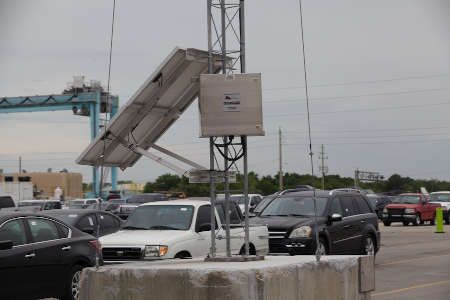
Turn existing structures and surfaces into supports for new wireless infrastructure. RapidMiniMax is a wireless networking solution that can attach to poles, towers, and other structures and surfaces to leverage existing vertical assets for improved wireless connectivity.
RapidMiniMax can run on existing AC power with a battery backup, or it can be configured to run exclusively on solar power. Like RapidOne, the RapidMiniMax can be quickly deployed in challenging environments and can function as a standalone solution or as part of an existing wireless infrastructure.
RapidCase
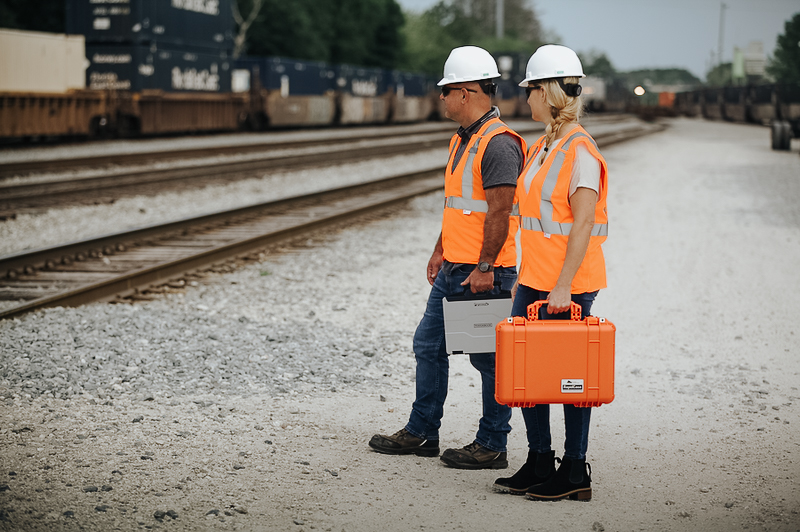
For on-the-go and remote situations, our RapidCase product is a compact, portable, network-in-a-box solution offering turnkey connectivity with the push of a button.
A portable, lightweight case contains everything you need to support Wi-Fi connectivity over a significant area, making RapidCase a critical tool for remote field work, emergency scenarios, search and rescue operations, and other planned and unplanned events. The case’s weatherproof design, extended battery life, and multiple backhaul options offer the flexibility and durability you need to support connectivity in the most challenging environments
RapidSky
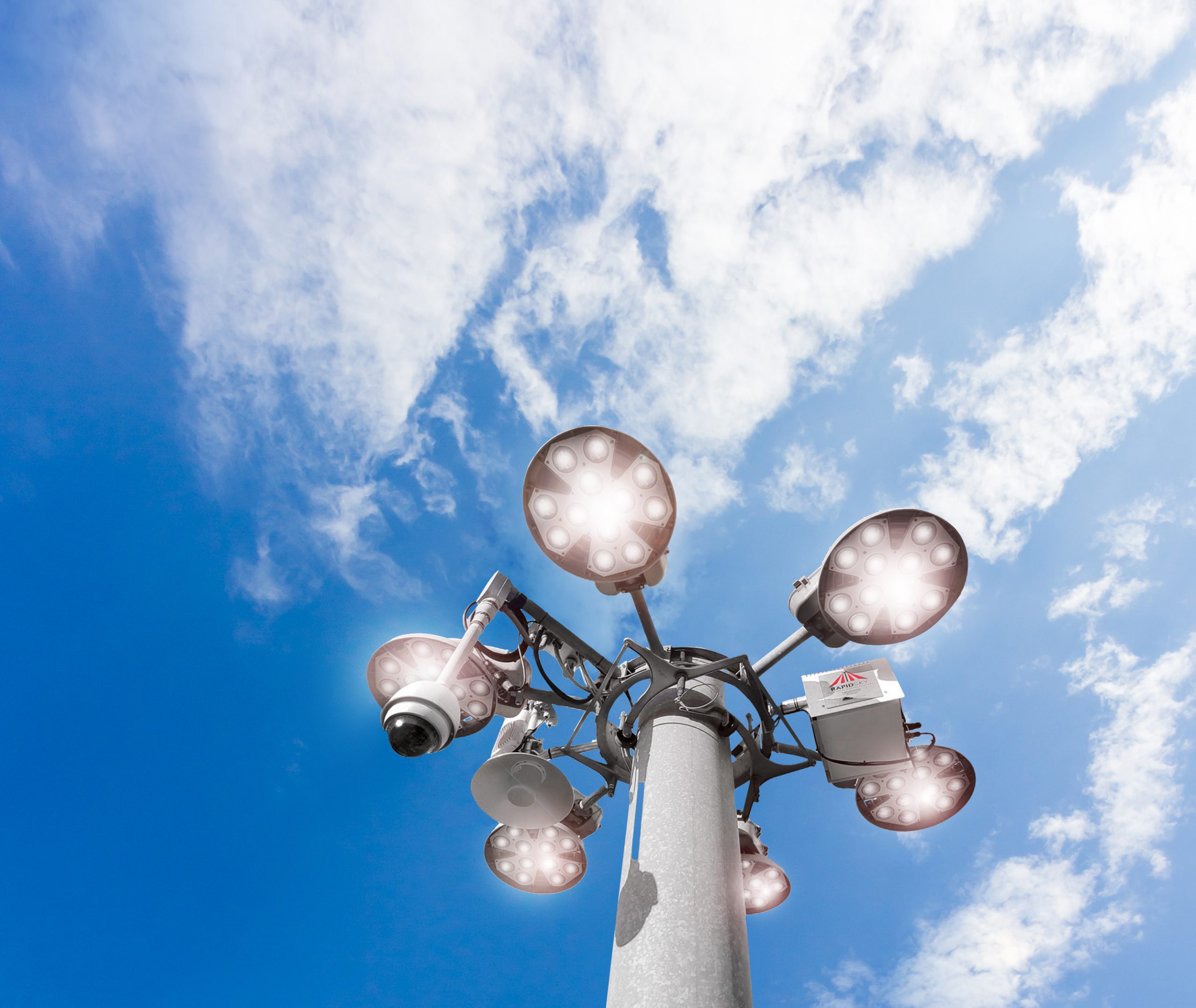
Engineered to address the challenges of intermodal shipping and storage, RapidSky ensures reliable Wi-Fi coverage in shifting environments where high container stacks can create significant interference for other Wi-Fi networking technologies.
RapidSky uses light rings, or existing high mast lights, mounted 100 feet in the air to optimize signal patterns and connectivity, directing Wi-Fi signals toward the ground from an elevation that can overcome the stack interference common in marine and intermodal environments. (Not to mention you can run them on solar.)
RapidCrane
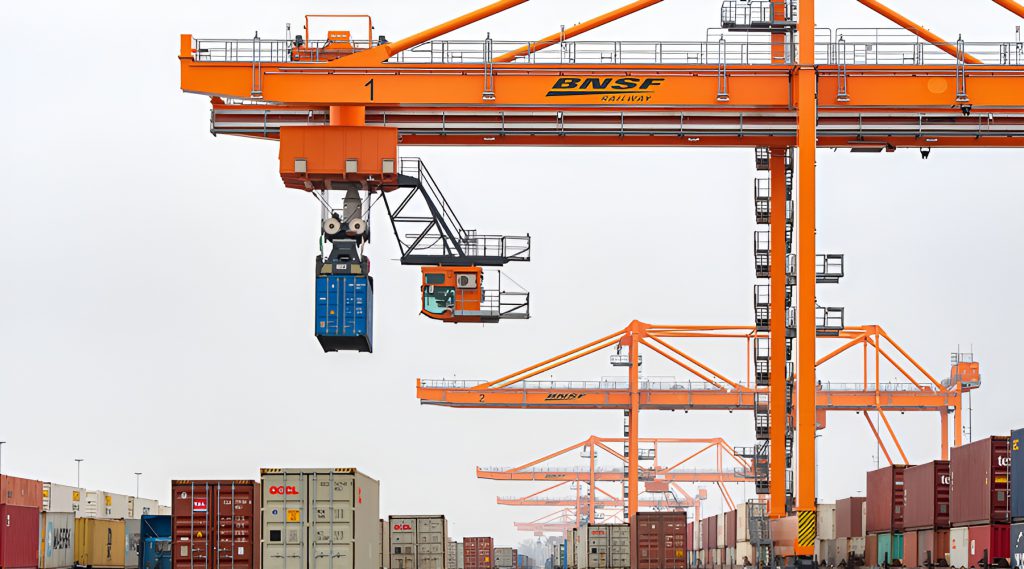
Designed for critical wide-span crane operations, RapidCrane offers high-speed, low-latency wireless connectivity that gives rail and marine crane operations the multi-gigabit speeds and redundant paths needed in this environment.
RapidFixed
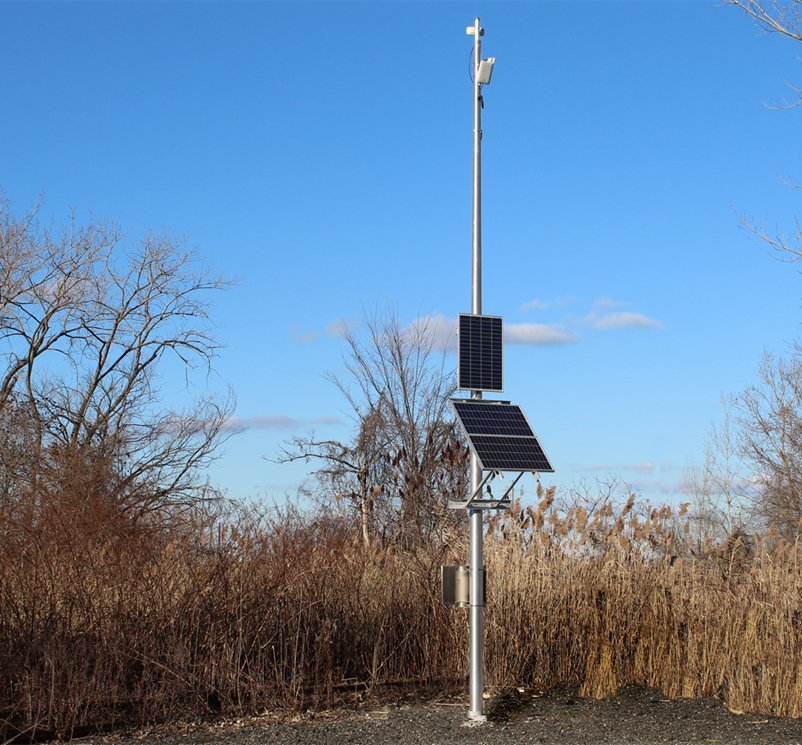
Implement permanent wireless infrastructure through an installation requiring only a single augured hole. RapidFixed is a ground-anchored, elevated networking solution designed for deployment in environments with stacked intermodal containers.
With straightforward installation and the ability to scale your network with multiple RapidFixed units, this wireless connectivity product can be deployed in days while slashing your capital expenditures for installing and managing infrastructure. Access points are mounted on a mast that can reach 35 feet high for clearance above multi-container stacks in your yard.
RAPID DEPLOY IN ACTION: Customer Success Stories
With our family of Rapid Deploy products, we’re able to choose the right technology to address unique challenges facing our rail, intermodal, and marine customers.
“We have a patented very unique way of deploying, maintaining, and guaranteeing wireless connectivity inside of those very abusive environments,” says Greg Dunnell, Principal at Buckeye Mountain. “We solve the problems that others can’t because we live in those environments 100 percent of the time.”
Here are two success stories that began with a connectivity problem and ended with a Rapid Deploy solution:
Delivering reliable connectivity for an intermodal rail facility
The Problem:
Our intermodal rail customer was relying on an outdated narrowband solution to provide connectivity at their facility. But new applications desired by the company required high throughput and reliable connections unavailable through existing infrastructure and nearby cellular coverage.
Our Solution:
Buckeye’s Rapid Deploy team installed RapidFixed systems at nine of the company’s intermodal facilities. Thanks to the solution’s speed of delivery and operational impact, the company has continued to expand its use of RapidFixed systems at other intermodal facilities.
All locations using RapidFixed technology continue to be monitored and maintained through Buckeye Mountain’s connectivity-as-a-service model.
Ensuring Continuous Operations for a Maritime Port Facility
The Problem:
After deploying outdoor antenna systems to support wireless connectivity through local cellular service, one maritime port facility found that cellular connectivity couldn’t offer the reliability and performance required by its operations—especially in extreme weather conditions, and in an environment where containers could be stacked five high.
Our Solution:
Buckeye Mountain’s Rapid Deploy systems quickly demonstrated their value by maintaining wireless connectivity during a hurricane that struck the customer’s maritime port. Since then, the company running this port facility has relied on Buckeye to implement Rapid Deploy systems at four additional port facilities, as well as on two container ships.
MORE THAN TECHNOLOGY: The importance of working with technical experts
Investing in the right technology can put your wireless connectivity efforts on the right path forward. But to realize the performance and value of those solutions, you need ongoing support from technical experts who can plan deployments and provide continued remote monitoring and support.
That’s why expert-led support is a consistent point of emphasis at Buckeye Mountain. Our goal isn’t selling as many products as possible—it’s about ensuring continued customer success and satisfaction with the wireless connectivity we deliver.
Here’s how we achieve that goal:
Design and Installation Support

We use predictive studies, spectrum analysis, site surveys, and heat mapping to help plan a wireless infrastructure solution specific to your environment’s needs. Our design services are offered with the sole goal of fitting your facility with the right wireless products to maximize connectivity and your mobile experience.
Our installers ensure that all Rapid Deploy products are properly deployed, connected to power, and configured to support connectivity in your environment.
Ongoing Remote Management
Once your network infrastructure is live, our comprehensive remote management support monitors all conditions relevant to your Wi-Fi systems. Our remote management dashboard can track everything from throughput to system temperature to solar power energy yields and can notify your operations team or dispatch personnel if any equipment needs servicing.
Field Training and Operational Support
Achieving buy-in from on-the-ground operations personnel is a critical component of deploying new infrastructure solutions. Our in-house field technical services teams, composed of full-time employees, are experts at working with personnel to provide proper training, onboarding, and technical support that will maximize the value of your infrastructure investment.
“A big part of technical support is making sure that on-the-ground staff have confidence in the solution that they’re using,” says David Fajardo, Manager of Field Technical Services at Buckeye Mountain. “That means confidence on the training side, but also confidence that the solution is going to work every single time. If something’s not working, we need to be there to fix it.”
Key Questions to ask before Reconfiguring Wireless Connectivity in your Yard
Even with convenient, quick-deploy solutions like our Rapid Deploy products, upgrading your wireless infrastructure is a significant undertaking. Given the cost, complexity, and impact on operations, each facility must perform its due diligence before choosing a new approach to wireless connectivity.
As you approach this decision, here are some questions to ask any potential infrastructure solutions provider:
1. Why does this technology cost so much?
If you’re only anticipating the cost of the hardware itself, you might experience some sticker shock when faced with the full cost of new connectivity infrastructure. That’s because hardware is only part of the total package: facilities may also need solar power and battery solutions, mobile products, and ongoing support from the provider—not to mention regular maintenance to keep equipment operating at peak performance.
“We don’t want any of our customers worrying about their hardware after we leave,” Hill says. “So we install, provision, and test the equipment, but we also maintain it 24/7/365. If any hardware fails, we’re going to replace it and it’s not going to cost you anything extra.”
(Side note: Buckeye Mountain guarantees connectivity, or your money back.)
Although some field and IT leaders may be tempted to seek out lower-cost infrastructure solutions that offer greater short-term impact, this approach carries long-term consequences.
“A lot of times, the reason these companies are coming to us now is because, 10 or 15 years ago, someone implemented a cheap system that the terminal quickly outgrew,” says Hill. “So it’s about trying to help the prospect understand that our infrastructure is not only better, but it’s probably going to be cheaper in the long run.”
2. When we need to talk to an expert, who should we call?
Rail and marine facilities need more than new technology. They need accountability and expert support when problems arise.
Whether you’re dealing with technical issues, onboarding difficulties, network performance concerns, or other challenges, you need full confidence that you can quickly connect with an expert offering guidance and other resources.
3. What is the long-term benefit of investing in quality wireless infrastructure?
Faced with surprising costs related to new infrastructure investments, some field and IT leaders may be tempted to seek out lower-cost infrastructure solutions that offer greater short-term impact, even at the expense of more pronounced long-term benefits.
“A lot of times, the reason they’re coming to us now is because, 10 or 15 years ago, some network admin implemented a cheap system that they quickly outgrew,” says Hill. “So it’s about trying to help the prospect understand that our infrastructure is not only better, but it’s probably going to be cheaper in the long run.”
4. What future costs will this infrastructure help me avoid?
On the subject of cost: when evaluating wireless infrastructure options, take some time to get more granular about the long-term outlook for this investment, especially when it comes to future cost avoidance.
If better battery systems and backup power reduce outages and downtime, for example, you can avoid the opportunity cost of stalled operations. Meanwhile, faster and more reliable connectivity can accelerate operations and realize new efficiencies across your facility workflows, controlling costs and supporting greater revenue generation. Aligning your network and technology plans can help you scale effectively. As you adopt new technologies like AI, remote operations, and high-resolution cameras, you’ll need a strong network to support them.
5. Can you point to success stories for projects similar to ours?
Satisfied customers are a strong marker of credibility. If an infrastructure provider can point to successful past projects involving similar needs and challenges to your own facility, you can have more confidence in their ability to deliver for your property.
“One thing we will never do is grow into a space without first being experts or investing in those who are already experts in that space,” says Dunnell. “We understand that we can’t go in there expecting to be taken seriously. And we recognize that if we did behave that way, we would not be acting in the best interest of our customer.”
There’s No Need to Worry About Your Wireless Connection
In dynamic outdoor environments, conventional wireless connectivity can change like the weather. Some days you’ll get sun, other days storms.
But field operations can’t function with unpredictable connectivity. They need consistent, reliable coverage, as well as high throughputs to keep their workflows humming.
That’s why we created our Rapid Deploy family of products. And, with Buckeye Mountain’s commitment to excellent delivery and expert support, we do everything we can to help our customers maximize the value of their wireless investment.
Don’t let a poor wireless connection drag down your operations. Find out how Buckeye Mountain can help you design and deploy an infrastructure tailored to your environment’s unique needs.
Ready? Let’s talk.
